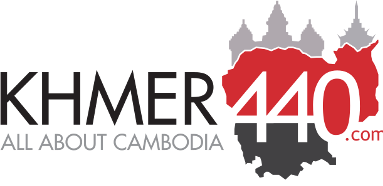Phnom Penh Teacher’s Diary 3
One of the objectives that I set myself for the first week is to learn the names of all my new students. At the moment, I’m not teaching very many classes. I have about forty students in all, so five days is a reasonable amount of time to get most of their names down.
It may only take one or two tries to get the name of that beautiful girl in the corner or that wisecracking boy in the back row. Yet, learning the rest can be difficult. Some teachers see hundreds of fresh faces each term, and most of them are likely to have rather unmemorable Khmer names.
Learning all their names is important for several reasons. The most obvious one is simply to show that you recognise your students. How would you feel if you were called ‘You-over-there-in-the-corner’ for ten weeks? Learning someone’s name shows you care, and that’s part of developing a good rapport.
Another reason has to do with classroom management. Remember all those laws you laid down on Day One? They?re a lot easier to enforce when you can call students by name. It makes them pay attention. It makes them listen up.
Imagine you’re explaining something and there?s distracting chatter coming from one corner. You unexpectedly raise you voice slightly and call, ‘Borey!’ The entire class falls silent, and twenty pairs of eyes turn to the source of the chatter.
Borey remembers your laws, and now he is trembling at the threat of your wrath. He appears confused for a second, then gathers his wits and looks to his friends to supply the answer, but you pre-empt this rescue by looking directly at him and saying, – Please pay attention, Borey. I asked you ??
You repeat whatever question it was that you asked in the first place, and if Borey is clever enough to get it right, you turn the situation around by giving him due praise. Being singled out is generally sufficient chastisement.
So learning names is important, but how do you do it? Years ago, I made the mistake of endlessly asking them to tell me their names whenever I called on them to supply an answer. This usually led to this sort of exchange (S. = Student, T. = Teacher).
T. Now look at the first question. [Reading] ‘Dostoyevsky’s novel The Brother’s Karamazov is very __________ (excite)? You over there in the corner. What’s your name?
S. Exciting?
T. No, what’s your name?
S. Excited?
T. No, no, you were right the first time. But what’s your name?
S. [Confused, desperate, fearful expression] I don’t know, teacher!
At that point, all you can do is humiliate the poor chap by taking a few steps toward him, asking him to listen very carefully, and repeating in a slow, overly enunciated manner, ‘What – is – your – name?’
Now, this may be a particularly painful moment. But it?s one that happens with shocking regularity even at pre-intermediate levels, where the kids have heard the question a thousand times.
It’s not that the teacher was speaking too fast. It’s not that he or she had an unusual accent. It’s just that they’re kids, and they tend to tune out, and then they allow situational cues to dictate their responses. That in itself is an important skill for language learners, but over-reliance sometimes leads them astray.
Scrapping that method, I took up two other techniques for learning names. One is not to point at any random student to answer a question, but to pick up the register and call a name at random. When the person answers, I take note of the name and face.
The other technique is to do the rounds of the classroom during the final twenty minutes. This is typically when students are doing some ‘productive’ activity such as speaking. You should be going around to monitor their progress and offer assistance anyway.
I take the register along and interrupt them for a moment. First, I try to guess their names. It?s easier to remember them that way. The point is, after all, to add their names to your own ‘active’ rather than ‘passive” vocabulary.
Most of the time, I get them wrong, and after two or three stabs at it, I give up and ask them to tell me. But doing this day after day does seem to speed the process along.
I’ll just mention one other way some teachers learn their students’ names. This is to have them choose an English ‘nickname’. I find this rather offensive. How would you feel if your Spanish instructor required you to refer to yourself as ‘Jose’ or ‘Garcia’??
We demand a lot from our students. We want them to learn a new language. The least we can do is learn their names.
Terry Avon



